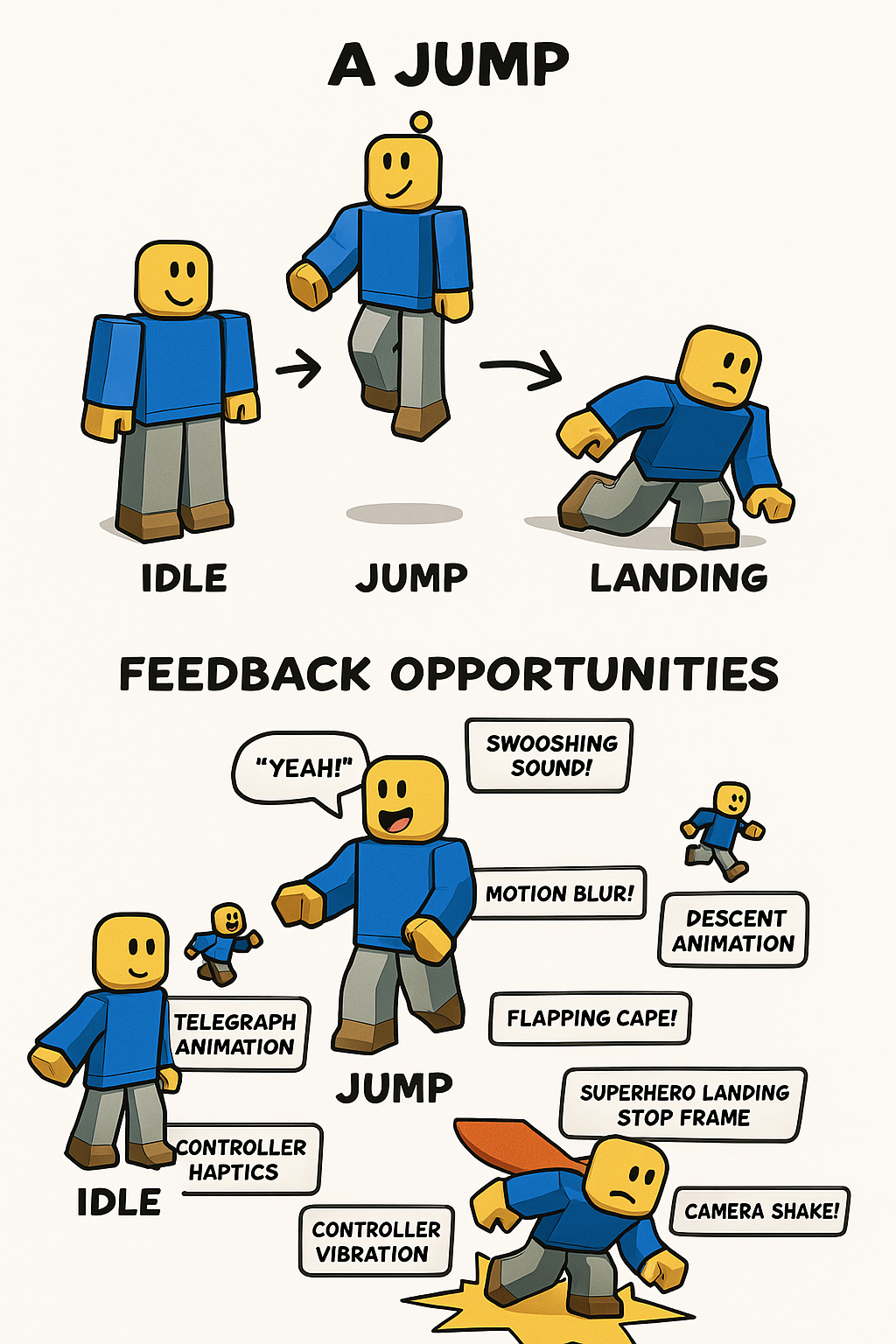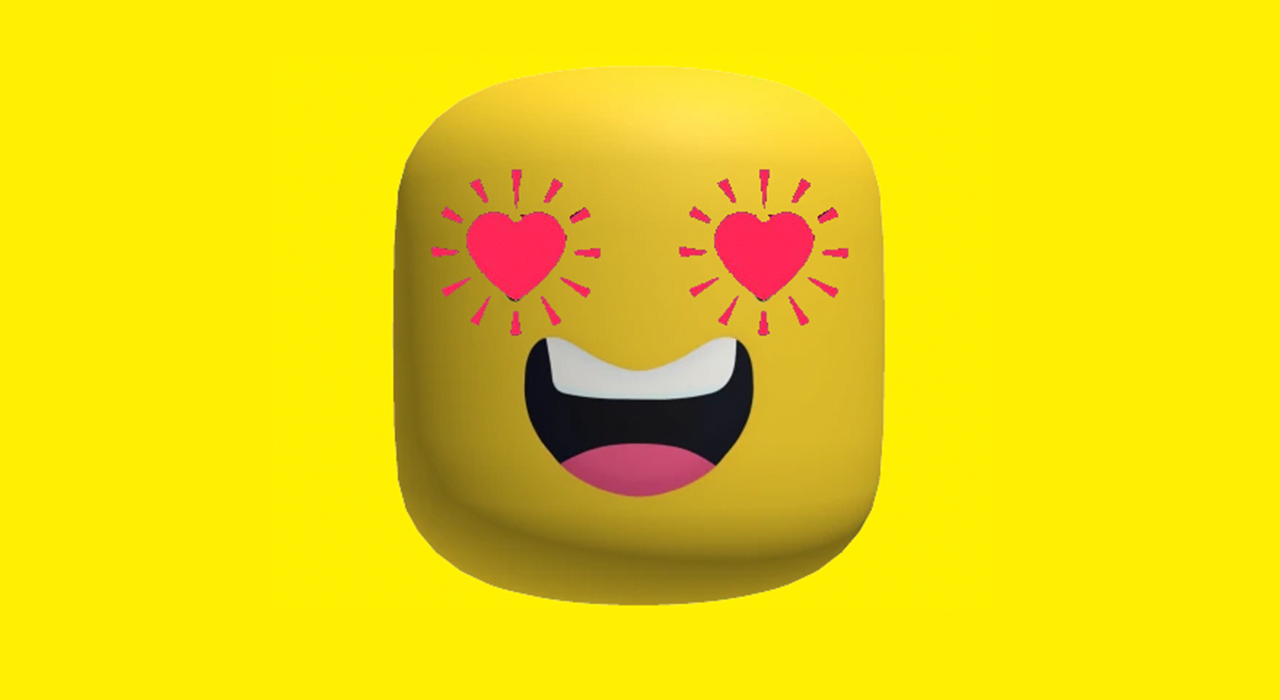You press a button - and ushers an elegant sequences - Your character jumps smoothly into the air, the sound of a swoosh fills the air, and the particles of a cloudly trail follows behind. At the peak of the jump, a sound of quick chime rings out, and the character swiftly animates as if they're reaching for the stars. You, the player, feel a rush of exhilaration. You land softly on the ground, and the character bounces slightly, ready for your next command. This is not just an action; it’s a deliberate, constructedc sensation envisioned by the game designer. This is game feel.
"Game feel" is the subtle interplay of controls, feedback, and responsiveness that makes a game immersive. It’s the “juice” that brings joy to pressing buttons, moving characters, and interacting with game worlds. From camera shake to perfectly timed sound effects, everything contributes to that intangible sensation that keeps players coming back for more.
One of the most prominent pioneers in articulating this concept is Steve Swink, who coined the term in his influential book Game Feel: A Game Designer’s Guide to Virtual Sensation. In it, he describes game feel as the "real-time control of virtual objects in a simulated space, with interactions emphasized by polish."
Published in 2009 by Morgan Kaufmann as part of its prestigious game design series, Game Feel: A Game Designer’s Guide to Virtual Sensation is written by Steve Swink, an independent game developer and lecturer with roots in both AAA and indie development. Swink's experience with titles like Off-Road Velociraptor Safari and his role at Flashbang Studios anchor the book in real-world design insights. The book emerged in response to a gap in game design literature—while terms like "tight controls" and "floaty movement" were often thrown around by developers, there was little concrete language or structure to describe why games feel the way they do. Swink took inspiration from an article by Mick West (“Pushing Buttons”) and set out to formalize this invisible, often intuitive art into a framework that could be measured, taught, and replicated. Thus, Game Feel was born—a synthesis of practical design wisdom and theoretical underpinnings that sought to demystify the elusive quality that was thrown around while developing games.
At its core, Swink defines game feel as the "real-time control of virtual objects in a simulated space, with interactions emphasized by polish." This definition is significant because it separates the experience of control from thematic, narrative, or even strategic layers of a game. Drawing from human-computer interaction, psychology, and design practice, Swink proposes a three-part model: real-time control (the player's continuous input-feedback loop), simulated space (how objects interact physically and visually in-game), and polish (visual, auditory, and tactile effects that enhance perception). These three pillars work together to craft a moment-to-moment sense of "feel" that is as emotional as it is mechanical. Think of the responsive jump arc in Super Mario Bros. or the satisfying recoil in DOOM—these aren’t just systems, they’re sensations.

For a concrete example of game feel, lets think of a super-hero platformer game. Take a look at the diagram above, which breaks down the seemingly simple act of our superhero character jumping into three core stages: Idle, Jump, and Landing. While the motion may appear straightforward, the diagram reveals just how many layers of feedback are at play to make that jump feel satisfying. Deconstructing this in Steve Swink’s model, the moment the player presses the jump button, the game delivers real-time control by instantly launching the character upward. That motion takes place within a simulated space, where the arc of the jump and gravity-driven descent reflect believable, game-ified physics. But it’s the polish that transforms the jump into a rich sensory experience: the character might shout "Yeah!" mid-air, a swooshing sound plays, a cape flaps behind them, and motion blur kicks in. Upon landing, a superhero-style stop frame, screen shake, and even controller vibration might reinforce the impact. As the diagram shows, each of these elements—from visual effects to haptic feedback—works together to elevate a basic input into a moment of delight, illustrating how thoughtful feedback design fuels the emotional core of game feel.
This feedback loop is crucial to game feel, as it creates a continuous interaction between the player and the game world. The player’s input (pressing the jump button) leads to immediate feedback (the character jumps), which in turn shapes the player's next actions and expectations. In fact, this is what designers aim for when they talk about "juiciness" in a game. Its the richness of the feedback that makes the game feel alive and responsive. This loop creates an emotional resonance that keeps players engaged, as they can feel the impact of their actions in real-time. The more polished and responsive this loop is, the more satisfying the game feels.
When creating 'Game Feel', we can think of it as a spectrum model —from subtle, lightweight feedback to powerful, full-bodied sensations—and where an action lands on that spectrum often depends on how frequently it occurs. Repetitive or frequent actions, like collecting coins, typically have a weaker game feel: the coin might simply disappear, a soft chime plays, and the UI updates to reflect progress. These are minimal but effective cues that keep the experience smooth without overwhelming the player. In contrast, actions that happen rarely—such as executing a charged special move or triggering a final blow—are often paired with much stronger game feel. These moments go all-in with juiciness: dramatic screen shake, slow motion, explosive sound effects, particle bursts, and even camera zooms. This contrast is intentional. By reserving the strongest feedback for rare actions, designers can create psychologically rewarding and emotionally resonant moments that leave a lasting impression.
In the end, what makes Game Feel powerful is its deep dive into player psychology and embodied experience. Swink positions game feel not just as a mechanical trait but as an experiential narrative—an extension of the player's body, identity, and senses. A good-feeling game doesn’t just allow you to control an avatar; it lets you become it. Through detailed examples and deconstructed case studies (from Asteroids to Super Mario 64), Swink shows how polish effects like screen shake or sound design don’t merely decorate gameplay—they create a feedback loop that viscerally immerses the player.
Exercises
1. [🟢 Easy] Define Game Feel
In your own words, what is game feel? How does it relate to feedback, juiciness, and the player's psychological experience?
2. [🟢 Easy] Recognize Game Feel in Games
Think of a recent game you’ve played that had satisfying controls or movement. What moment stood out? What types of feedback were involved (sound, animation, visual effects, haptics)?
3. [🔵 Medium] Analyze a Mechanic
Choose one specific mechanic in a game you like (e.g., jumping, dashing, aiming, reloading). Break it down using Swink’s model: How is real-time control handled? What does the simulated space feel like? What kinds of polish are layered in?
4. [🔴 Hard] Evaluate a Design Decision
Do you agree with Swink’s definition of game feel? Are there games that lack strong game feel but are still enjoyable? What makes them work despite that?
5. [🔴 Hard] Evaluate Whether Every Action Should Have a Strong Game Feel
Consider the pacing and clarity of a game. Should every action—like opening a menu, pausing the game, or switching weapons—have strong game feel? When might too much feedback become overwhelming, distracting, or even reduce the clarity of player intent? Reflect on where game feel enhances the experience, and where subtlety or restraint might be the better design choice. Reflect back on thinking game feel as a spectrum between weak and strong feedback. How can you balance this in your own designs?
6. [🔴 Hard] Create Your Own Game Feel
Design your 'Game Feel' within your game and its respective mechanic: It could be a single action like a punch, a dash, or a magic spell. Describe how it would feel in terms of control, simulated physics, and polish. What kind of emotional reaction do you want the player to have?
/ END OF LOG ENTRY / RETURN TO MAIN SYSTEM /

